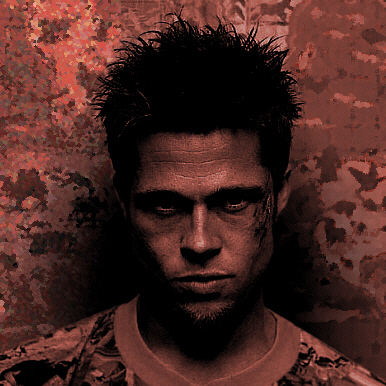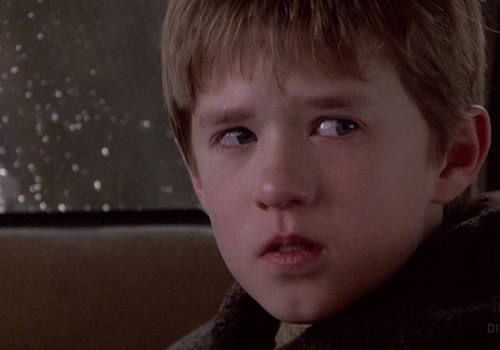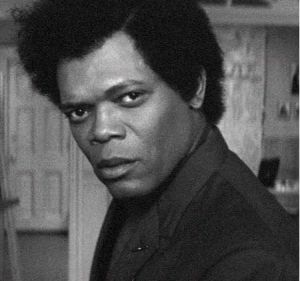When
most hear the word “antagonist,” they automatically think “bad
guy” or “villain.” They assume the antagonist has to be evil,
or criminal, or at least a colossally self-absorbed jerkoff. However,
an educated writer will know that none of these are requirements of
a capable antagonist. The whole “bad guy” thing is merely part of
a formula used to simplify narrative (i.e. dumb it down) to all
but guarantee that audience identification goes in the right
direction.
The only
real requirement for an antagonist is that the character directly
oppose the protagonist's goal. The protagonist wants to accomplish
something, but the antagonist stands in the way from the beginning
of the narrative to its end. If the protagonist is going to succeed,
he or she most overcome the antagonist's opposing force.
However,
this opposing force need not be malevolent in nature. The antagonist
character may act with the best, most virtuous intentions. It is not
even a necessity for the antagonist to recognize his or her
opposition to the protagonist. (For example, Mozart in Amadeus
has no idea that the protagonist Salieri is trying to ruin him.
Mozart still provides conflict as he naturally tries to fight back
against these ruinous attempts, even though he does not know their
source.) Antagonism is really little more than simple physics.
It is an irresistible force met with an immovable object. What one
wants is the opposite of the other. In the end, someone has to give.
To
demonstrate how the protagonist/antagonist relationship goes beyond
the typical good guy/bad guy dynamic, here are four categories of
abnormal antagonists who generate story conflict in nontraditional
ways.
The Friendly Antagonist
In these stories, the protagonist and antagonist are friends. They
bear each other no ill will. Despite this, the friendly antagonist's
wants, needs, actions, and desires still stand in direct opposition
to the protagonist and his or her goal. The protagonist cannot reach
this goal until the other character's opposition is removed.
Cole
in The Sixth Sense
Cole
is sweet, innocent boy. He is the last character one would
identify as a bad guy. He and the protagonist Dr. Malcolm Crowe
(Bruce Willis) spend a lot of time together, and their interaction
is, for the most part, friendly and supportive. Regardless of this
relationship, Malcolm's story goal is directly opposed by Cole's.
Cole appears to be a mentally disturbed boy. Malcolm, a child
psychologist, wants to help Cole. However, Cole does not want
Malcolm's help and resists his attempts. Even when Cole starts to
give in, Malcolm refuses to believe Cole's secret, continuing their
conflict. The story cannot be resolved until both sides accept each
other and abandon their mutual resistance.
Russell
Hammond in Almost Famous
Almost
Famous is the story of teenage
newbie rock journalist Will Miller. Will's story goal is to complete
an article for Rolling Stone on the band Stillwater. The only problem
is that he cannot reach this goal without getting an interview from
the band's star guitarist Russell, something Russell refuses to do.
Though Will looks up to Russell, and the two even grow to become
close friends, Russell is Will's antagonist. Russell's refusal to
give the interview keeps Will on the road indefinitely, creating
trouble for him from Rolling Stone and his mother. This conflict continues unresolved until the story's end. Russell is also the
force of antagonism in Will's subplot. Will is in love with groupie
Penny Lane, but Penny is in a sexual relationship with Russell. Will
will never get his dream girl as long as Russell is in the way.
The
Mentor Antagonist
Elijah
Price in Unbreakable, Tyler
Durden in Fight Club, Henri
Ducard/Ra's Al Ghul in Batman Begins
 These antagonists start the story as what seems to be anything but antagonistic.
They are the protagonist's ally, teacher, father or mother figure.
They put the protagonist on the path to who he or she eventually
becomes. Only then, at a certain point, the protagonist realizes that
this mentor is no longer a person he or she wishes to associate with.
The protagonist breaks off the formerly positive relationship,
putting the two sides at odds. This is psychologically similar to the
process we all go through in high school when we must break away from
the control of our parents to become independent persons. The mentor
antagonist rarely bears any real ill will towards the protagonist. After
all, the mentor helped create the protagonist. He or she simply
resents the fact that the protagonist now opposes him or her. If
given the choice, the mentor antagonist would prefer the protagonist
to rejoin his or her side so they might achieve the antagonist's goal
as a team. The protagonist refuses the offer, putting the two sides
into a unity of opposites where one side must be defeated.
These antagonists start the story as what seems to be anything but antagonistic.
They are the protagonist's ally, teacher, father or mother figure.
They put the protagonist on the path to who he or she eventually
becomes. Only then, at a certain point, the protagonist realizes that
this mentor is no longer a person he or she wishes to associate with.
The protagonist breaks off the formerly positive relationship,
putting the two sides at odds. This is psychologically similar to the
process we all go through in high school when we must break away from
the control of our parents to become independent persons. The mentor
antagonist rarely bears any real ill will towards the protagonist. After
all, the mentor helped create the protagonist. He or she simply
resents the fact that the protagonist now opposes him or her. If
given the choice, the mentor antagonist would prefer the protagonist
to rejoin his or her side so they might achieve the antagonist's goal
as a team. The protagonist refuses the offer, putting the two sides
into a unity of opposites where one side must be defeated.
The Virtuous Antagonist
Some
stories flip the good guy/bad guy dynamic on its head. In these
films, the protagonist is the criminal, the villain, or the
all-around bad dude. The protagonist's actions then incite a lawful,
virtuous, and well-intentioned antagonist to stop him or her.
Bruce
Wayne/Batman in Batman
(1989 version)
The
surprising thing about Tim Burton's first Batman film is that it is
completely misnamed. It should be called “Joker,” since the
villain is in fact the story's real protagonist. If one makes the
typical assumption that Batman, the good guy, is the protagonist, the
film appears to be a structural mess. Bruce Wayne does not appear
until 20 minutes into the film. Not only this, but the Story Spine
would not be firmly established until the story's midpoint.
Until then, Bruce/Batman remains passive and reactive, with no
legitimate reason to take action. But, when one realizes the Joker is
the real lead, the structure falls into perfect place. Batman
is instead a Vengeance Narrative about a lunatic trying to get
revenge on those who have wronged him. He is then opposed, and
eventually defeated, by the Caped Crusader. This makes Batman the
film's antagonist.
Chief
Marge Gunderson in Fargo
In
the same way, most people assume that Chief Marge Gunderson (Frances
McDormand) is Fargo's
protagonist because she is the story's force of good. But then, one
would have to explain why she does not appear in the story until
the beginning of the 2nd
Act. The film's 1st
Act is led solely by the actions of the morally-bankrupt Jerry
Lundergaard (William H. Macy). This simple fact makes it simple to
conclude that it is Jerry who is the film's protagonist, and Marge
the antagonistic force that emerges to stands in his way. (A similar
argument can be made for Michael Mann's Heat
(1995), where Robert De Niro's master criminal character is opposed by
Al Pacino's police detective. However, since both characters are so
equally-weighted throughout the narrative, this creates a sort of
chicken-or-the-egg debate that could go either way.)
The Shadow Antagonist
A
shadow antagonist is an antagonistic force that is not really “there”
in the story – at least not at all times. Rather than harass the
protagonist from beginning to end, the shadow antagonist lurks behind
the scenes like a ghost, almost as a non-participant while the
protagonist struggles with other problems, only to pop up at the most
inopportune moments to ruin everything. The key quality of the shadow
antagonist is that he or she is not directly related to the
protagonist's main goal. The shadow is instead a trickster and a
ruiner who does harm to the protagonist, not because he or she
opposes the protagonist's goal, but because he or she opposes the
protagonist's very existence, health, and happiness. The shadow wants
to trip up the protagonist just for the sake of tripping.
Mal
in Inception
It
took me nearly three whole viewings of Inception
to
finally put my finger on the identity of the antagonist. At first it
seems to be Saito (Ken Watanabe). But Saito turns from
antagonistic to friendly after the inciting incident. Then, it seems
the antagonist might be Robert Fischer (Cillian Murphy), the man
whose head Cobb is trying to hack into. But this assumption again
dashes on the rocks when Fischer joins Cobb to help him
achieve his goal. The only real, credible threat to Cobb's victory,
from beginning to end, is Mal - a dead woman, who technically does
not even exist outside of Cobb's memory. It is Mal who ruins Cobb's
extraction attempt in the opening sequence. It is Mal who kills
Fischer moments before an assured victory. It is Mal whom Cobb must
overcome in the story's climax, and it is the constant threat of Mal
that makes the team nervous throughout their entire mission. Though Mal
only appears a handful of times, though she is completely secondary
to the mission itself, and even though she technically does not even
exist, she is Cobb's antagonist. Cobb must destroy her to claim his
story goal.








2 comments:
Errrr... Batman/ Bruce Wayne appears less than five minutes into Tim Burton's Batman. Long before Jack Napier/ The Joker. The scene with the iconic "I'm Batman" line...?
The first shadowy appearance of the Batman is merely a teaser. The audience does not receive any character information on him. Bruce Wayne (the man behind the mysterious mask, the HUMAN BEING with thoughts, needs and emotions) does not appear in the flesh until much later, at the point when many movies wait to introduce their antagonist. Now look at Dark Knight. The situation is reversed. We see the Joker briefly in the opening teaser sequence, before we see Bruce Wayne. Now, which one is the protagonist this time around?
Post a Comment